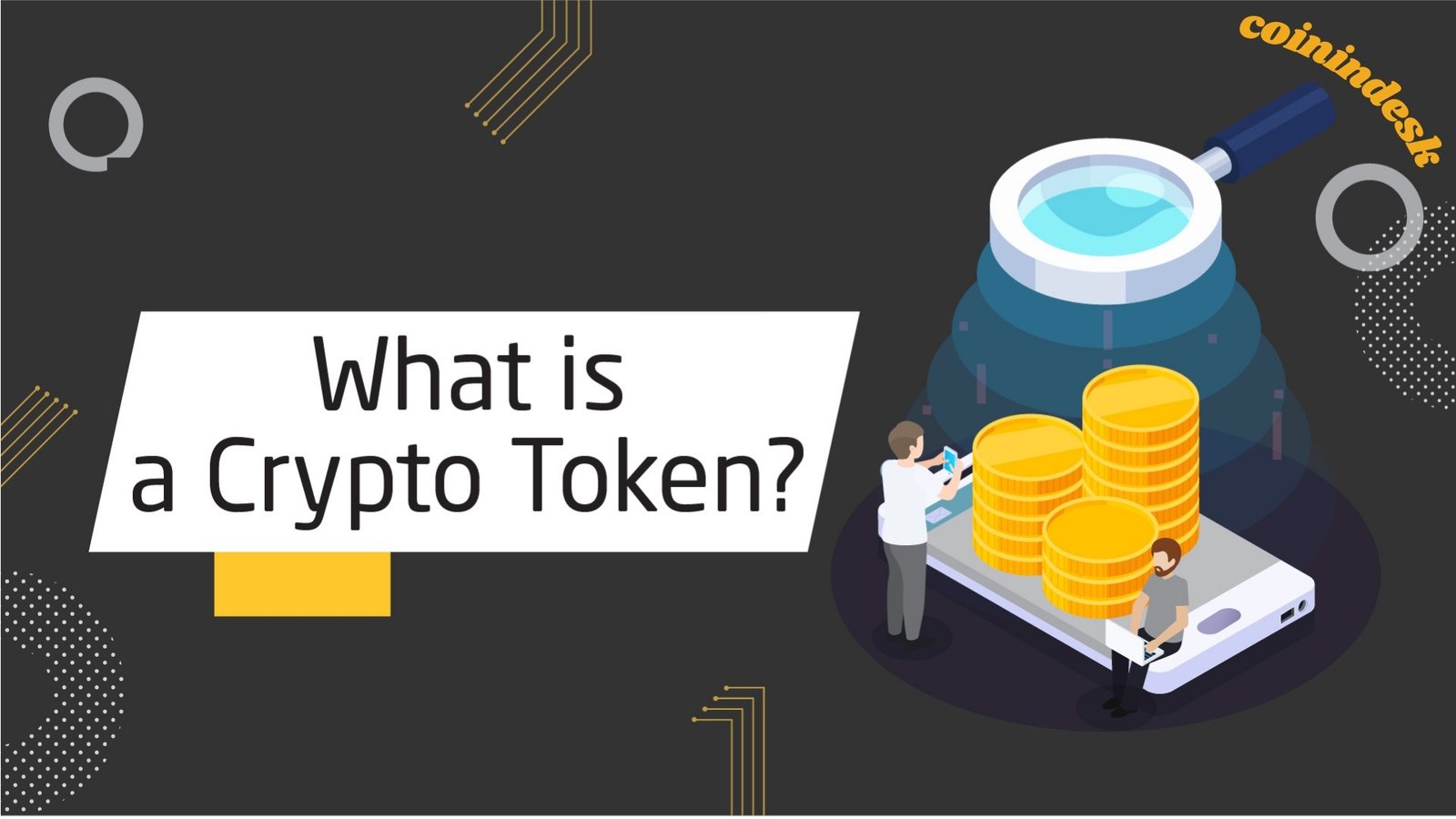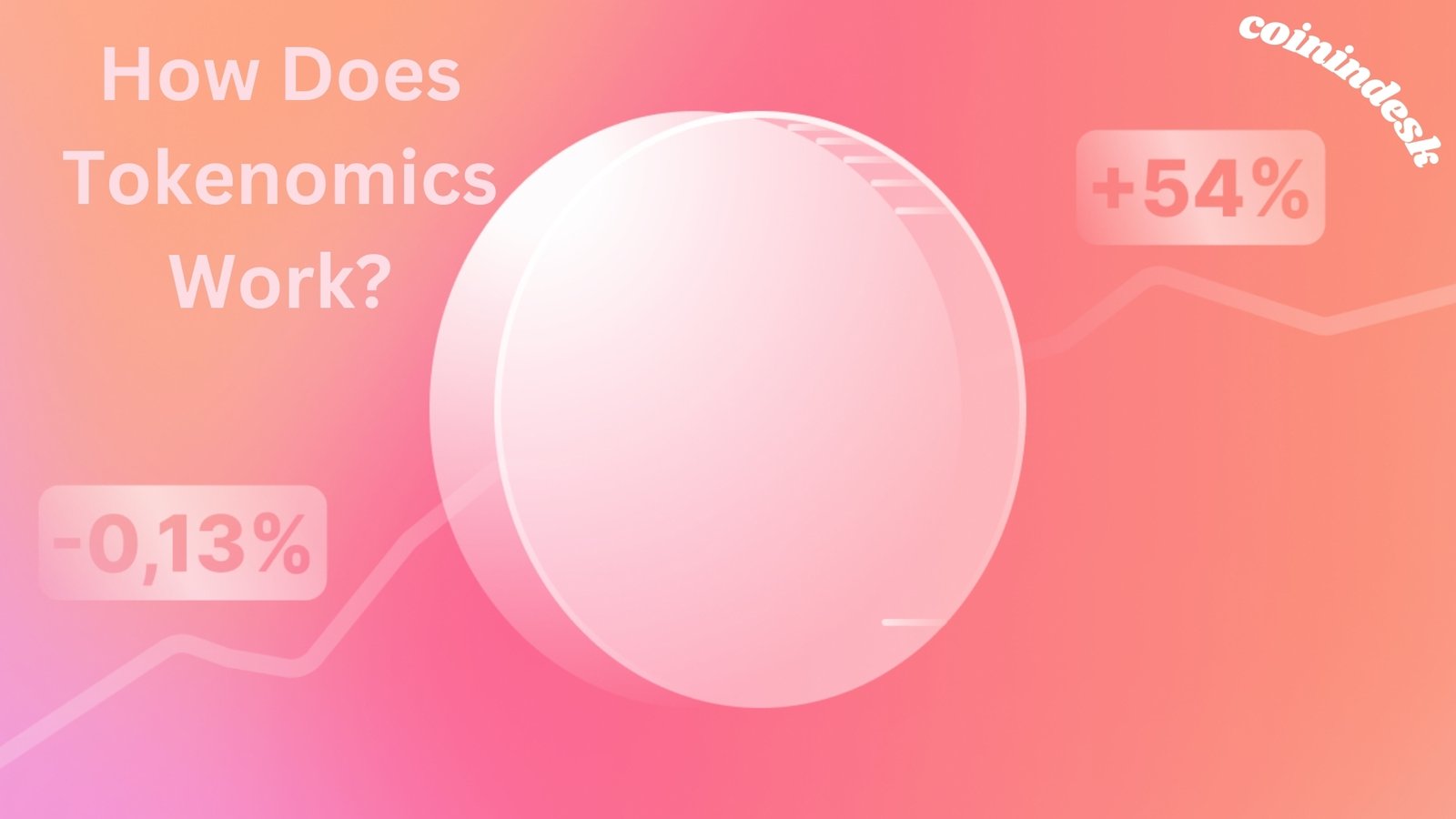Tokenomics in Crypto. The correct combination of tokenomics is essential for any valued crypto asset so that crypto enthusiasts and investors can understand the nuances and make educated judgments. Anyone, even malicious actors, can access public blockchains. By bringing all parties into harmony and fortifying the blockchain technology, tokenomics aids in building trust. An incentive for participants to behave ethically is the potential increase in the value of crypto assets when the community of a blockchain experiences an uptick in positive conduct. If you’re new to the cryptocurrency field and want to learn the ins and outs of tokenomics, this article has you covered. It also lays out the groundwork for what constitutes good tokenomics in the context of a cryptocurrency.
What is a Crypto Token?

Tokens are digital units of digital currency that serve as assets or representations of certain uses on blockchains; they are utilized extensively in the cryptocurrency field. Utility, security, and governance are the three most prevalent uses of tokens, however, they have many more.
The issue schedules of blockchain-based cryptocurrencies and tokens are pre-determined and generated algorithmically. This allows for precise forecasting of the total supply of coins by a given date.
Although certain crypto assets can change their issuance schedules, doing so is typically a challenging procedure that necessitates consensus among the majority of participants in a certain blockchain. When compared to government-issued fiat currency, this means that the tokenomics of any particular cryptocurrency will stay stable and predictable. The following categories of tokens are defined according to their relative importance:
- Layer 1 tokens: These tokens are native to a specific blockchain and used for powering all activities on the blockchain;
- Layer 2 tokens: Layer 2 tokens are used in decentralized applications in a particular blockchain network;
- Security tokens: These are investment contract tokens, which must fulfil several conditions, such as money investment, profitability, and common enterprise. A security token must also pass the Howey Test;
- Utility tokens: Utility tokens are useful for financing a network and are issued through an Initial Coin Offering (ICO);
- Fungible tokens: Fungible tokens have the same value together with the replication facility. An example of a fungible token is ETH tokens on the Ethereum blockchain;
- Non-Fungible tokens (NFTs): These tokens don’t share the same value, making them unique. They are used in the tokenization of digital assets, including pictures, collectables, or artworks.
What is Tokenomics?
Combining “token” with “economics” yields the term “tokenomics.” In 1972, Harvard psychologist B.F. Skinner brought the concept of tokenomics to the forefront with his initial proposal. A token economic approach, according to Skinner, may bring about system-wide behaviour alignment.
Tokenomics is a catch-all phrase for the study of cryptocurrency that attempts to define the economics of tokens by outlining the variables that influence their utility and worth. Things like the token’s burn schedules, incentive mechanisms, supply and demand, and production and distribution are examples of such aspects.
According to crypto experts, a cryptocurrency’s success hinges on its tokenomics. To make educated decisions, stakeholders and investors should evaluate a project’s tokenomics. Similarly, developers and founders of a cryptocurrency should give serious thought to the tokenomics of the native currency before beginning a crypto project; this will affect the project’s success and its capacity to attract investors.
In the end, initiatives that have well-thought-out incentives surrounding their tokens have a better chance of long-term viability and performance. An increase in demand and, by extension, the value of a token, is a natural consequence of increased interest from potential investors in projects with solid foundations.
Also Read: Vesting in Crypto: An Ultimate Guide By Coinindesk 2024
How Does Tokenomics Work?

As an example of tokenomics in crypto, let’s look at the entire supply of Bitcoin. There will be exactly 21 million Bitcoins in circulation by the year 2140, according to the programmed supply. The amount of Bitcoins that may be created through mining will decrease by half every four years until that number is reached.
Scarcity, an economic principle that causes prices to rise, was intended to be created by this halving process. Bitcoin laid the groundwork for subsequent cryptocurrencies with its issuance method and timeline as the pioneer cryptocurrency. The total supply of ZCash (ZEC), Bitcoin Cash (BCH), and Bitcoin SV (BSV) is 21 million coins. Litecoin (LTC) and other cryptocurrencies follow the same protocol but include a bigger total supply.
However, some cryptocurrencies function on a different timetable. For example, the token supply for Dogecoin and SHIB is infinite. Different from Bitcoin’s deflationary supply, Dogecoin’s is inflationary. Nonetheless, supporters of Dogecoin, like Elon Musk, think that tokenomics is the key to Dogecoin’s utility. As Musk has previously stated, DOGE gives the impression of being inflationary, although this is not necessarily the case.
Many tokens and coins fall somewhere in the middle, with some using the Ethereum blockchain and others not. One such coin is Tron (TRX), which has a total supply limit of more than 100 billion. There is no limit to the maximum quantity of Ethereum, but there is an annual maximum issuance.
Another feature of several crypto projects is the ability to “burn” a fixed amount of coins or tokens at predetermined intervals. With this idea, the money goes into a secure wallet from which it is impossible to retrieve. If an asset’s demand and price are already high, burning it could drive them even higher.
The Basic Principles of Tokenomics

The economic framework surrounding a cryptocurrency will likely dictate the incentives for investors to purchase and hold it. Like other fiat currencies, cryptocurrencies have their unique monetary policies.
Tokenomics has the potential to shed light on two key aspects of a cryptocurrency economy: the incentives that govern token distribution and the usefulness of tokens, which impact demand. Just like in a traditional economy, the relationship between supply and demand determines prices, the same holds in the cryptocurrency market; initiatives that offer suitable incentives tend to attract more investors. Key factors influencing tokenomics are as follows:
Mining and staking
To authenticate transactions and add new blocks, a group of participants in a base layer blockchain—like Bitcoin, Ethereum 1.0, Bitcoin Cash, or BNB Chain—use a decentralized network of computers. This process is called mining.
As soon as new blocks are validated, participants receive newly mined coins as a reward for their computational efforts in finding new blocks. Similarly, on layer 1 blockchains or blockchains that use the Proof-of-Stake (PoS) consensus method, individuals who secure a portion of their assets in a smart contract are rewarded with more coins.
Yields/incentives
The high returns offered by Decentralized Finance (DeFi) systems encourage investors to purchase and stake tokens, which is a key component of tokenomics. Many services, such as cryptocurrency exchanges and lending platforms, rely on liquidity pools, which are big pools of cryptocurrencies in which tokens are staked. As an incentive, participants can receive new tokens.
Token burns
Tokens can be “burned” by some blockchains or protocols to decrease their supply. This has the potential to boost the price by making the remaining tokens more scarce. As an example, Ethereum began burning some of the tokens used as transaction fees in August 2021 as part of its token-burn practice.
Limited and unlimited supply
Tokenomics records the total supply of tokens. For example, by 2140, all 21 million Bitcoins will have been issued and circulated, as the overall quantity was limited by the coin’s creators. Ethereum, in contrast, has a yearly cap but no maximum supply. The tokenomics of NFTs control the level of scarcity in the system. For instance, certain collections can create a single NFT for an artwork.
Token distribution
Below is an image of Chainlink’s (LINK) tokenomics, which shows how token allocations and vesting periods are crucial to Bitcoin tokenomics. Token distribution details were part of this functionality, with a set number of tokens set aside for developers and VCs. The reserved tokens, however, cannot be sold until after a specific period, according to the tokenomics of such projects.
Based on the attributes listed, it’s clear that regulating the production and distribution of tokens is the main focus of tokenomics for crypto assets. Finding out if the token is deflationary or inflationary is the first step. The supply of inflationary tokens rises as time goes on, whereas the supply of deflationary tokens falls.
If inflationary tokens are to be created, their creators will need to figure out a feasible means to validate transactions and add more tokens to circulation. The problem is that more people will likely pitch in by rewarding the validators, which might lead to a rise in the token supply.
It all comes down to the methods used by deflationary crypto assets to lower the total supply of tokens. Token “burning” is the most common method used by crypto projects to achieve this goal. This could mean destroying a certain percentage of user-paid transaction fees or destroying a portion of the tax collected from each transaction.
Who Decides the Tokenomics of a Cryptocurrency?
The decision regarding tokenomics, its features, and how it works is a preserve of the developers of a crypto token. As pointed out earlier in this guide, tokenomics revolves around the following aspects of a token:
- The maximum supply;
- Mining or burning process;
- Transaction fees;
- Incentives for token holders.
These choices are made at the protocol level when the creators of a cryptocurrency encode the majority of its tokenomics. The whitepaper for a cryptocurrency lays out the basics of the tokenomics before the coin is released. You may learn all about the planned development and release dates of a cryptocurrency asset, along with the technology that will power it, in a whitepaper.
Importance of Tokenomics in Cryptocurrency Investing
Investors and speculators alike would do well to familiarize themselves with the effects of supply and demand in the cryptocurrency market. The market prices could be affected by these two forces. The economics of crypto tokens lay out the rules for using digital money.
It also makes it clear if the use of the platform or the service being built has a clear connection to the digital asset that is being proposed. All of these things add up to predict an asset’s potential for appreciation. When considering a cryptocurrency’s tokenomics, it’s crucial to ask the following questions:
- How many coins or tokens are currently in circulation?
- How many coins or tokens will be available in the future, and when will come about?
- Who owns the coins?
- Are there some coins coming out in the future?
- How does it account for any coins lost, burned, deleted, or rendered unusable?
Conclusion
The study of tokens and their value—known as tokenomics—is crucial to understanding the inner workings of a cryptocurrency. If they want to know what financial and governance rights they can gain by buying a token, experienced and aspiring investors both need to research the tokenomics of a project before getting involved.
If they want to know how to assess a cryptocurrency project, they need to study tokenomics. You can learn a lot about the supply and demand for a token by looking at its tokenomics, which is similar to reading the project documentation or whitepaper. The founders may learn more about their team’s demand-side strategy for the token, which can help them assess its potential and how it stacks up against Bitcoin, the US dollar, and other cryptocurrencies.


